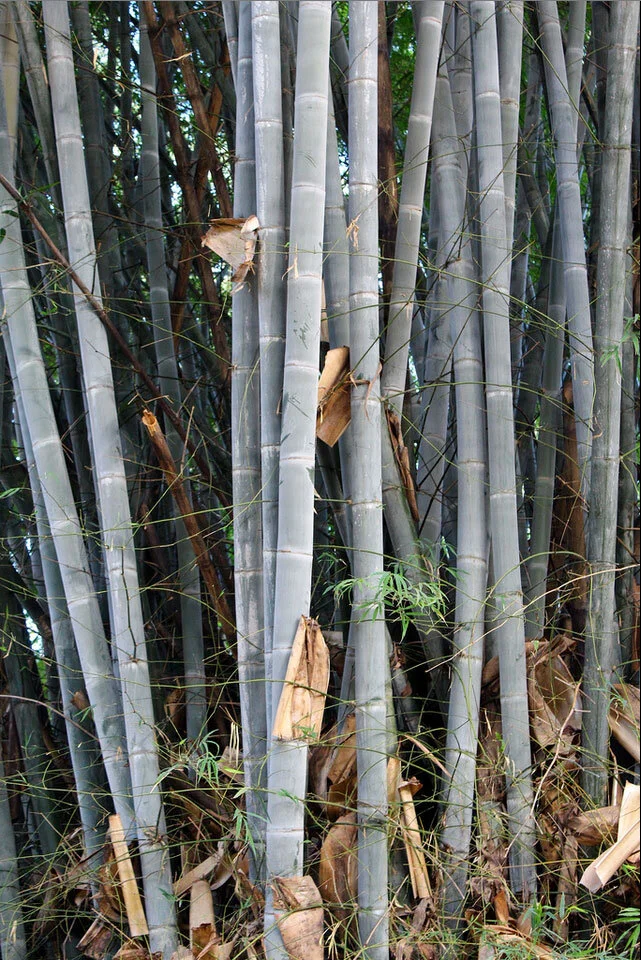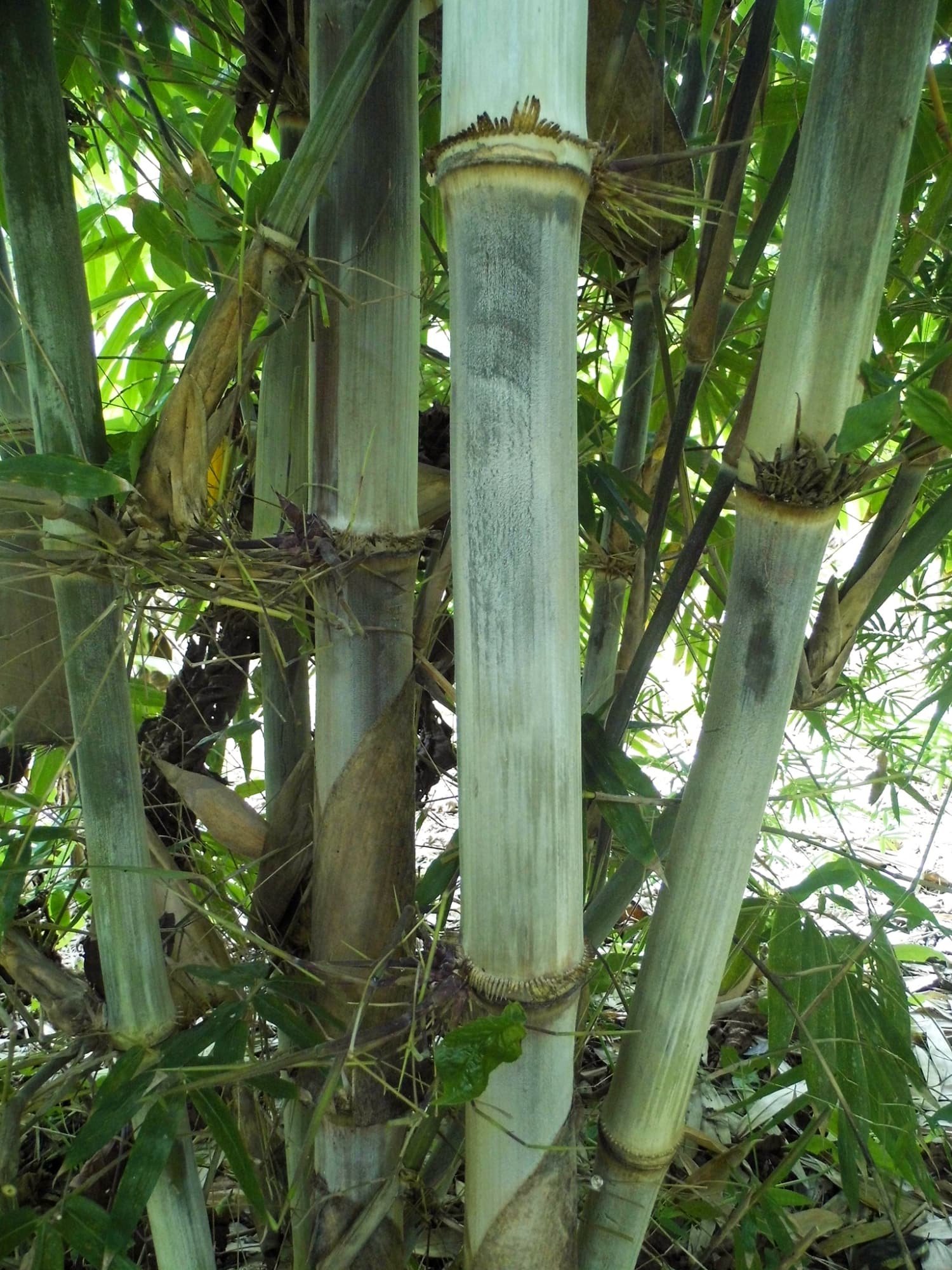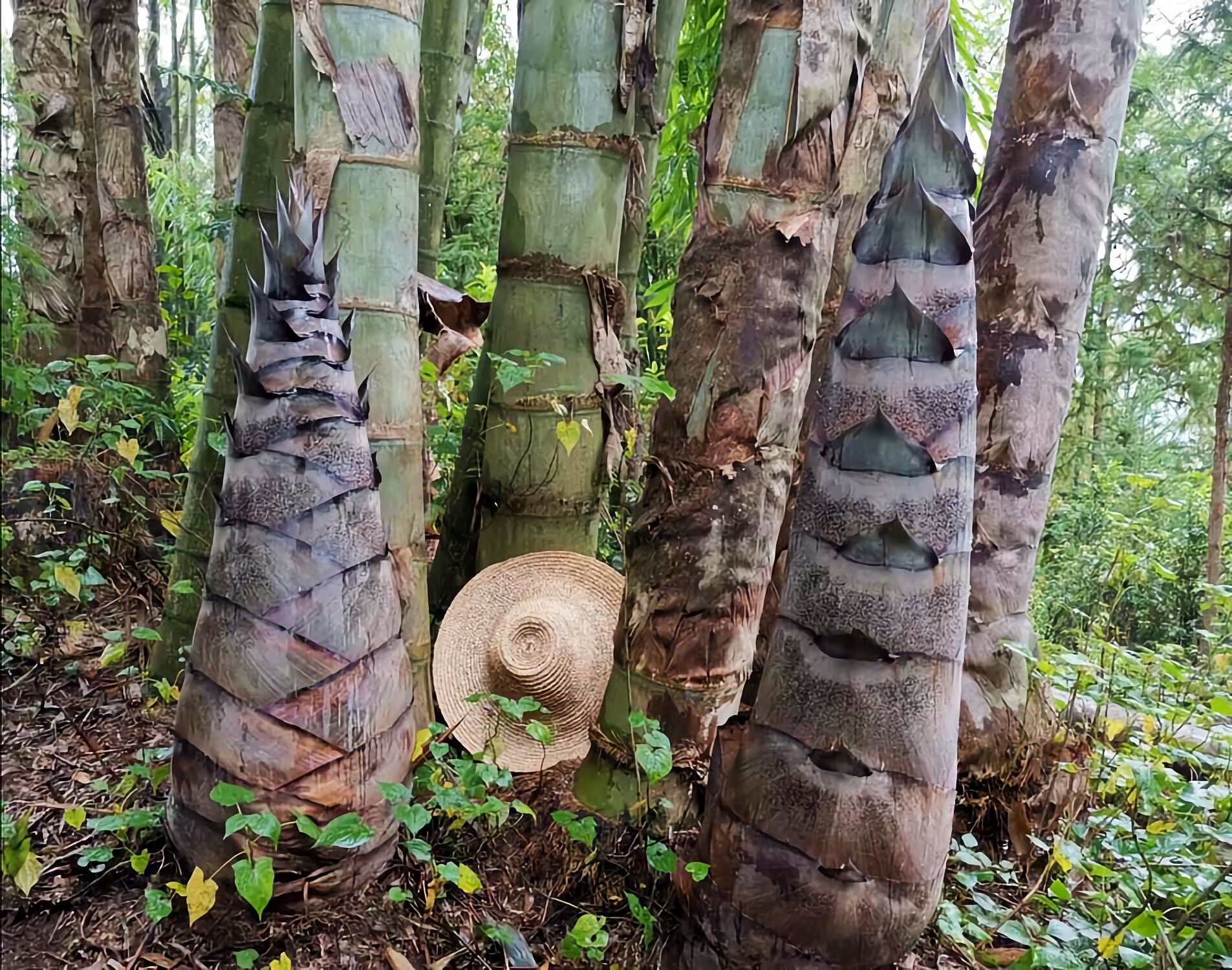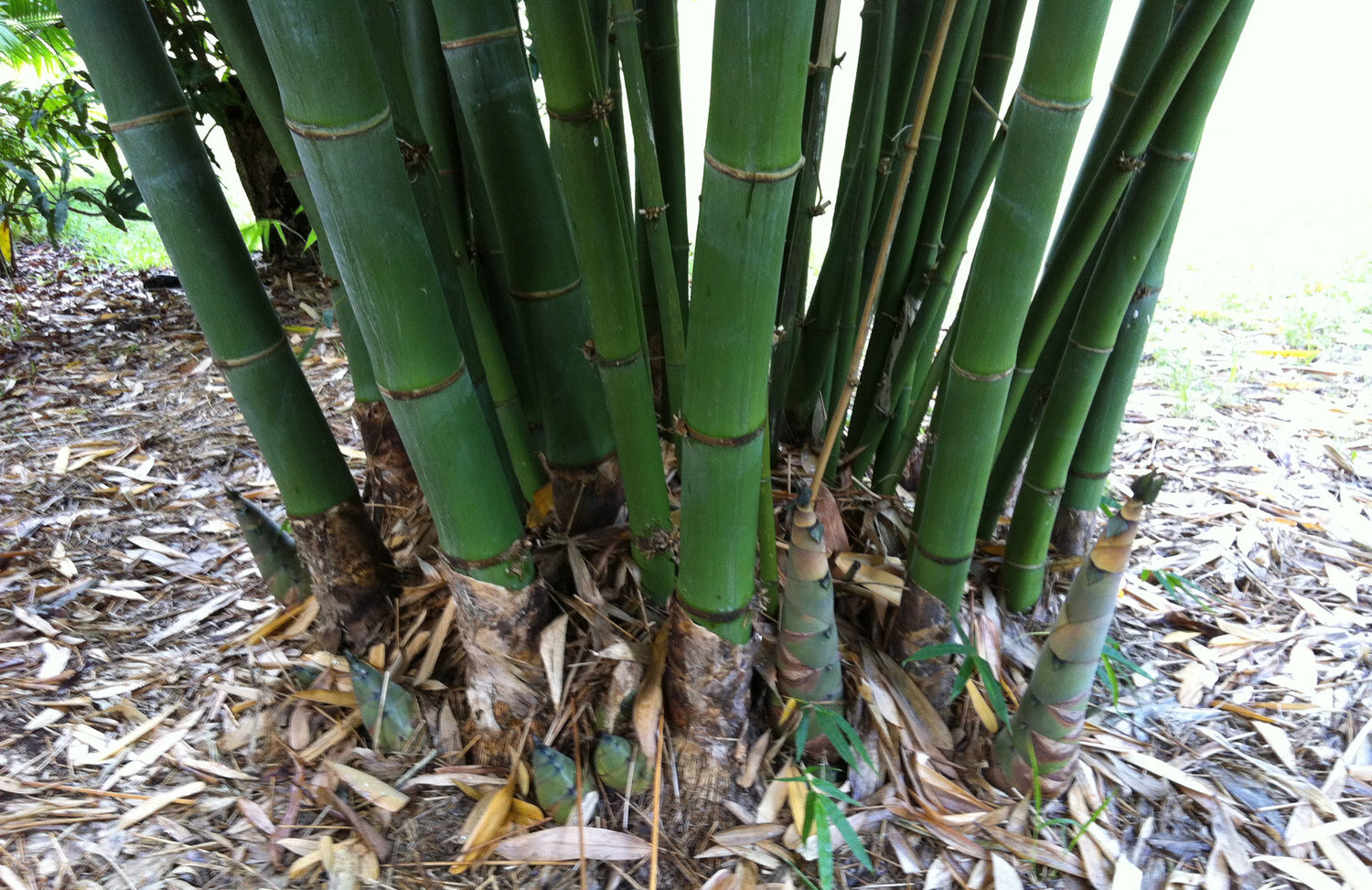Dendrocalamus membranaceus
Dendrocalamus membranaceus also known as Waya Bamboo and formerly classified as “Bambusa membranacea” is a medium-sized tropical clumping bamboo originating from Southeast Asia. This bamboo species is a good source for paper pulp and has edible shoots.
| Plant Info | |
|---|---|
| Scientific Name | Dendrocalamus membranaceus |
| Synonyms | Bambusa membranacea |
| Common Names | Waya Bamboo, White Bamboo |
| Family | Poaceae |
| Tribe | Bambuseae |
| Genus | Dendrocalamus |
| Height | 10 - 18 m |
| Diameter | 6 - 10 cm |
| Growth Habit | Clumping |
| Climate | Tropical - Subtropical |
| Hardiness | -4°C |
| Edibility | (3 of 5) |
| Flowering Cycle | 18-20 years |
| Origin | Bangladesh, Cambodia, China, Laos, Myanmar, Thailand, Vietnam |
| Uses | Construction, Furniture, Basketry, Matting, Handicrafts, Laminated Boards, Handicrafts, Paper Pulp |
Culms
Dendrocalamus membranaceus is a moderate-sized, strong bamboo forming loose clump. Culms are straight and usually between 20-24 m high and 6-10 cm in diameter. Internodes are 22-38 cm long and covered with a white powdery deciduous scurf when young, but green on maturity. Nodes are strongly ringed and basal nodes show rootlets.
Branches
Several to many clustered branches with 1-3 larger dominant branches. The upper branches are slender and bare many leaves.
Leaves
Lance-shaped leaves which are on average between 12-25 cm long and 1.5-2.5 cm broad.
Seeds
Flowering of this species was last reported in 1992 and 1994 from North-Eastern India.
Habitat
Dendrocalamus membranaceus prefers laterite and black limestone soils, and is most found in tropical mixed deciduous or monsoon forest below 1,000 m altitude.
Uses
Origin
Native to:
Bangladesh, Cambodia, China South-Central, Laos, Myanmar, Thailand, Vietnam
Introduced into:
Puerto Rico, Sumatra












Date planted: 22 June 2021
Growth update: 16 March 2022
Adopted by: